Over the past 4 days our ES&S group took a trip to the Maldives. We visited 6 different islands and learnt about different themes surrounding how they each handle issues of waste management, energy usage, water treatment and biodiversity. The majority of the islands (80%) only sit around 1 meter above sea level rise. Because of this, the Maldives have become some sort of a poster child for the effects of climate change as it is predicted that many of the islands will have sunk within the next 100 or so years.
Seeing how the islands each dealt with this issue was really interesting as a lot of more conventional methods of dealing with things like waste transport and urbanization don’t necessarily translate over as well into a nation composed of nearly a thousand islands. Many of the islands have to have their own individual waste management and water treatment facilities rather than them being centralized like they would be in areas connected by land. Much of the waste from the resort islands and Malé, the main city, is transferred to landfill islands such as Thilafushi which we visited. The waste is transported by boat to these islands either for, in the case of Male, there not being enough space to store it, or in the case of many of the resort islands in which it would take away from the natural beauty of the islands that brings tourists to the country in the first place. Other, more populated islands such as Maafushi deal with waste on the islands themselves with there being dedicated processing plants in which waste is either converted into energy or incinerated on the island. These energy conversion plants provide a large amount of energy to these types of islands.
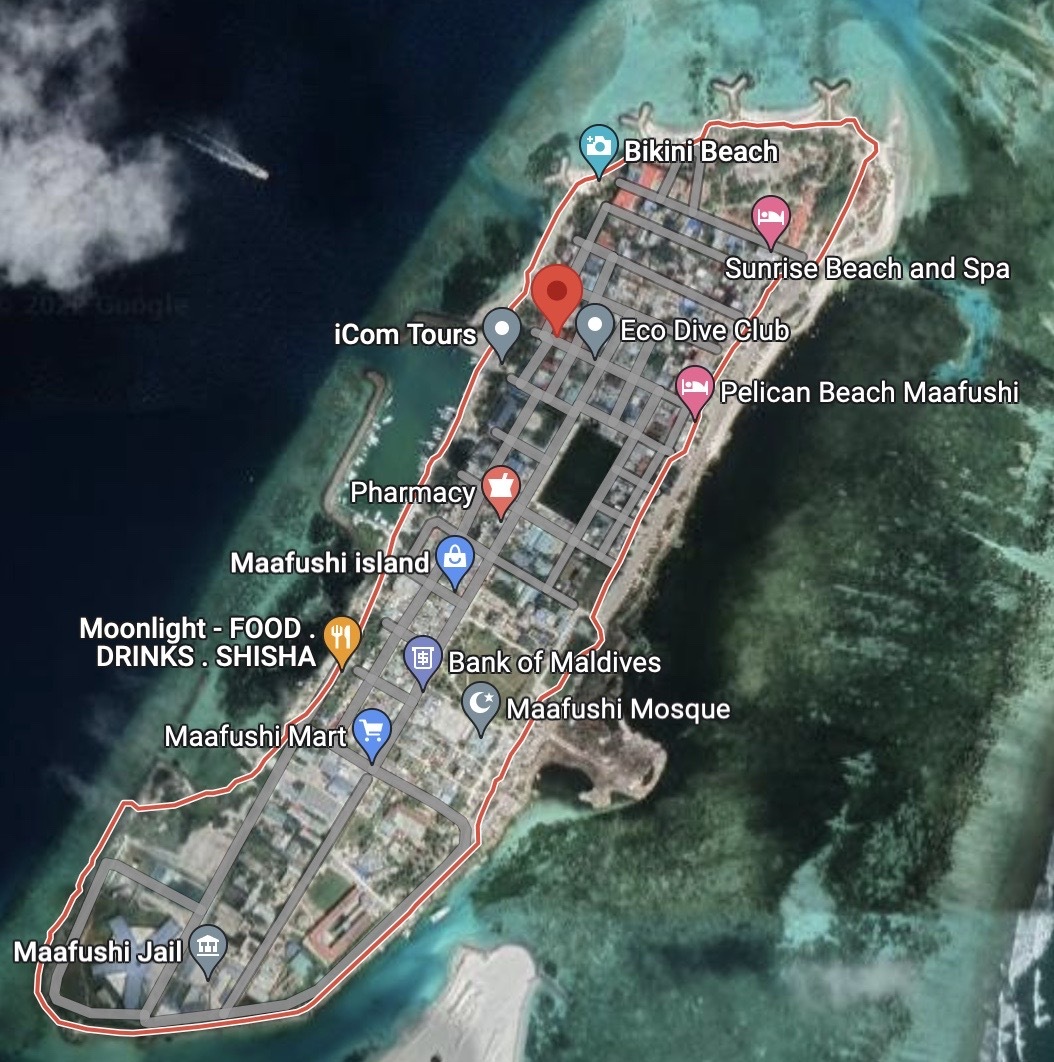
Maafushi (Photo Courtesy, Google Maps)

Embudu Village, (Photo Courtesy, Google Maps)
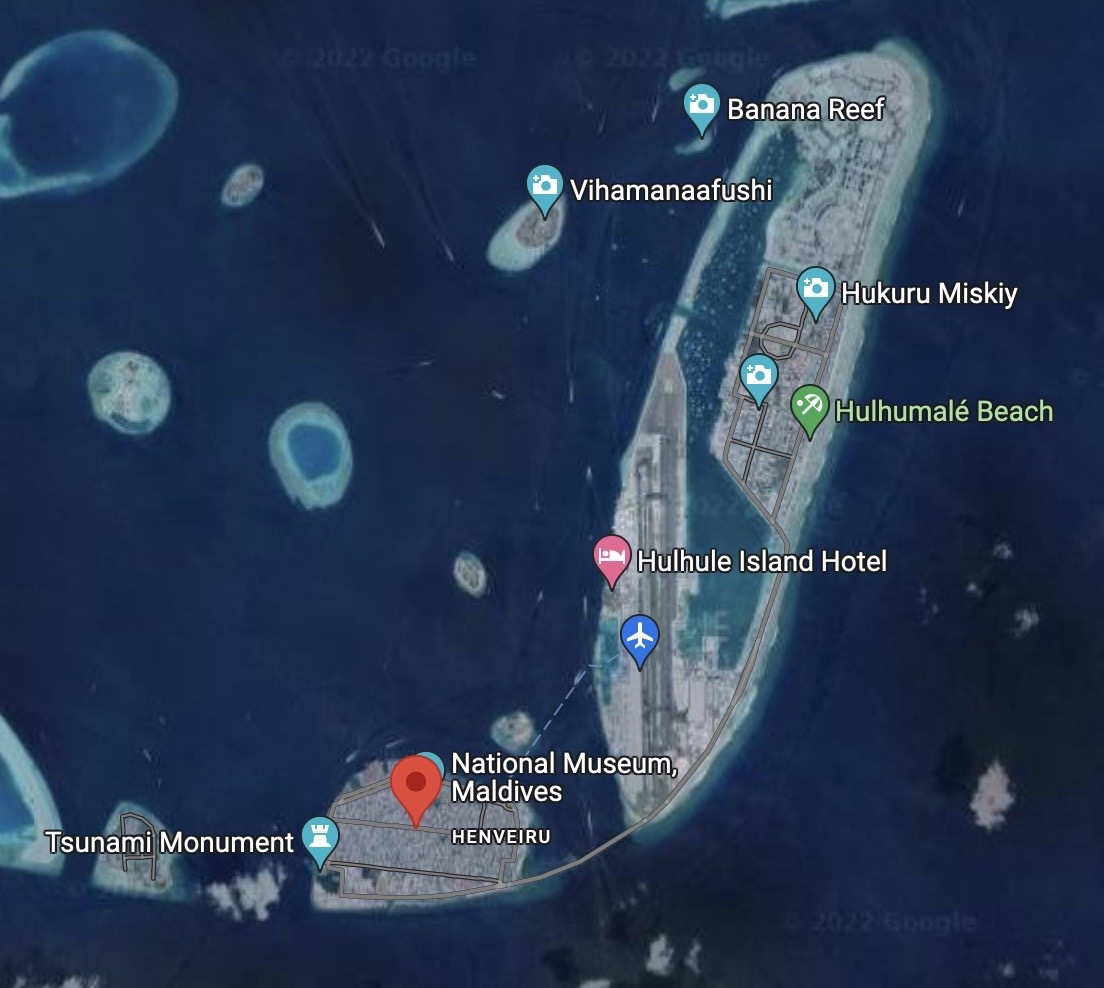
Male and Hulhumale (Photo Courtesy, Google Maps)
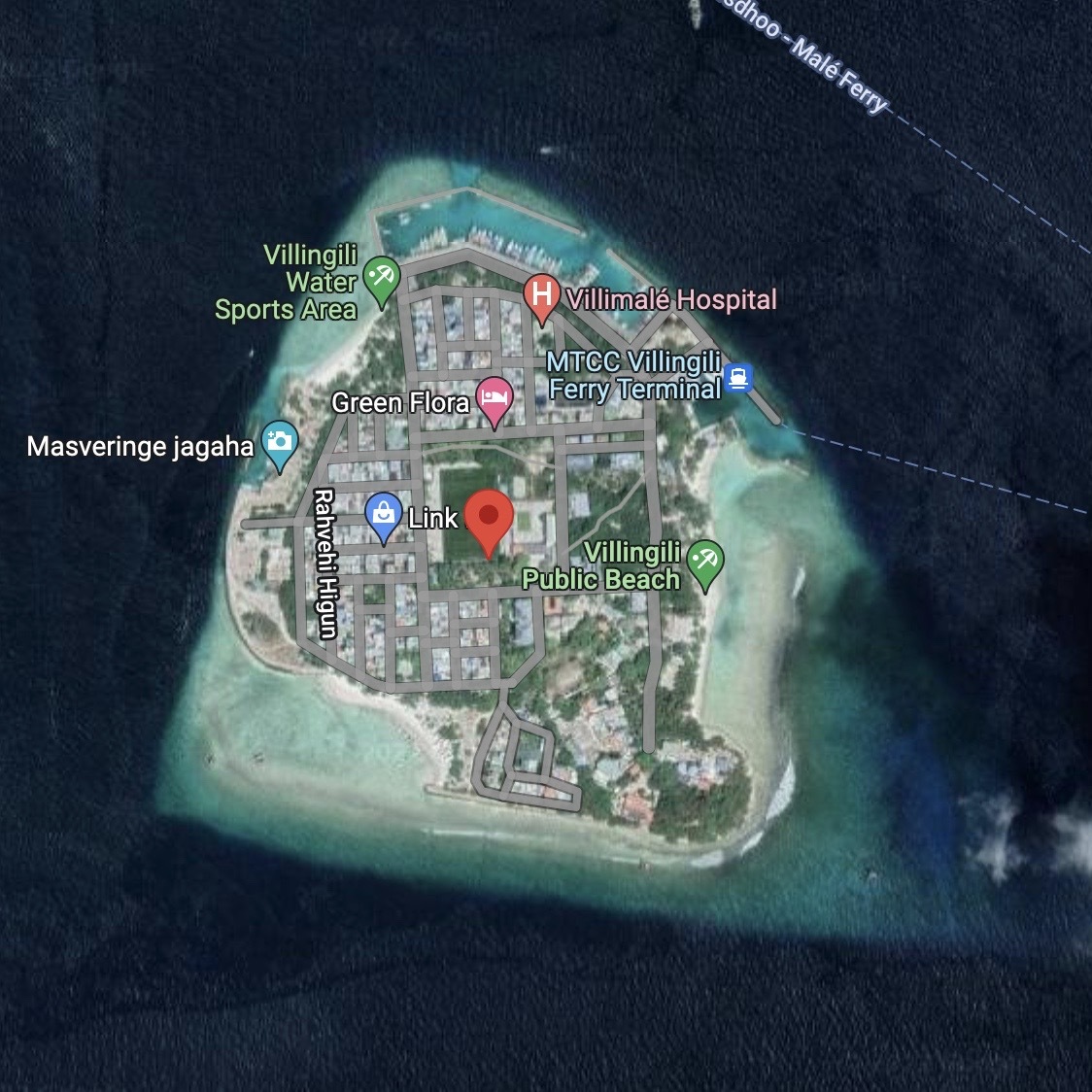
Villingilli (Photo Courtesy, Google Maps)
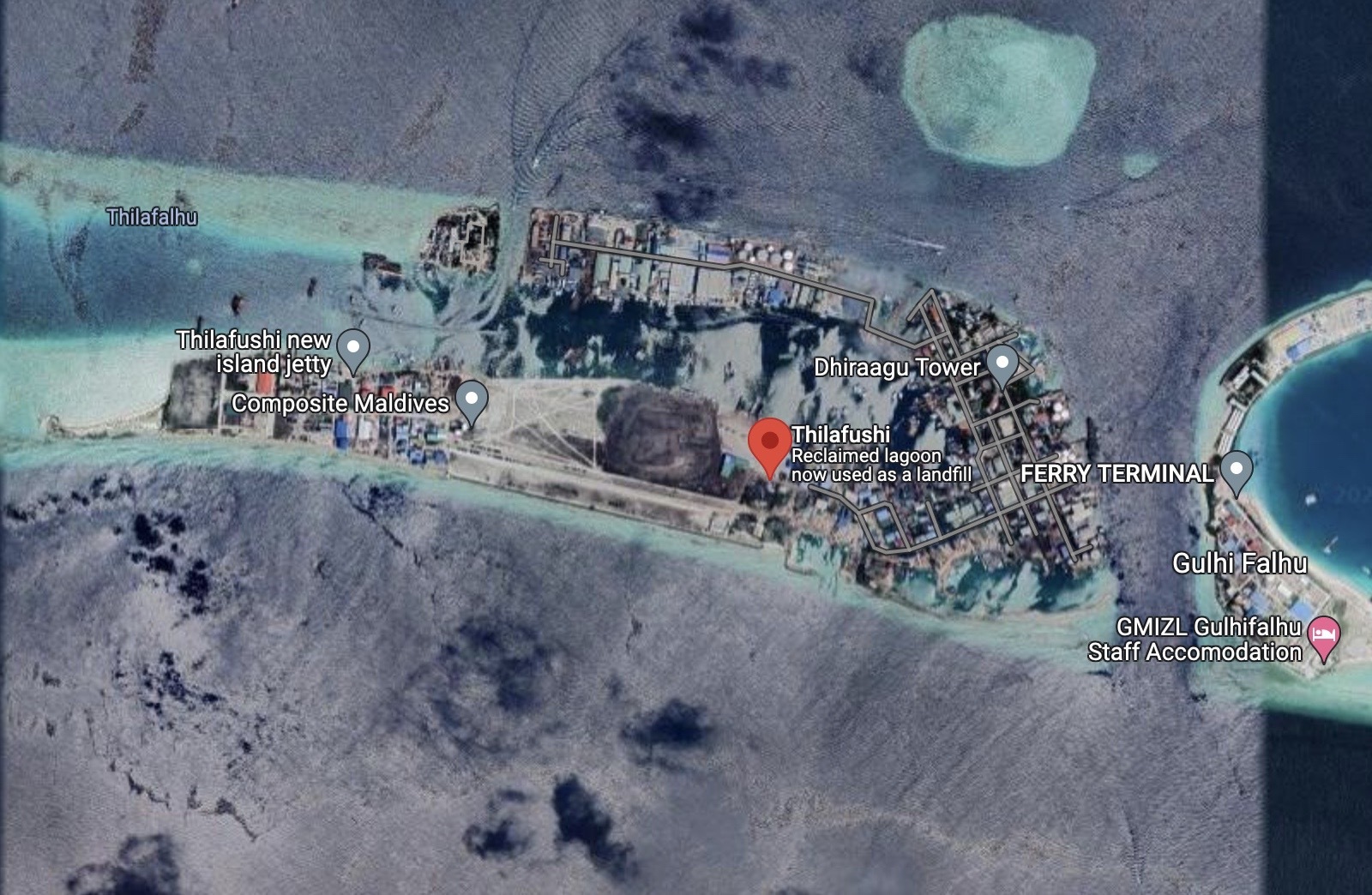
Thilafushi (Photo Courtesy, Google Maps)
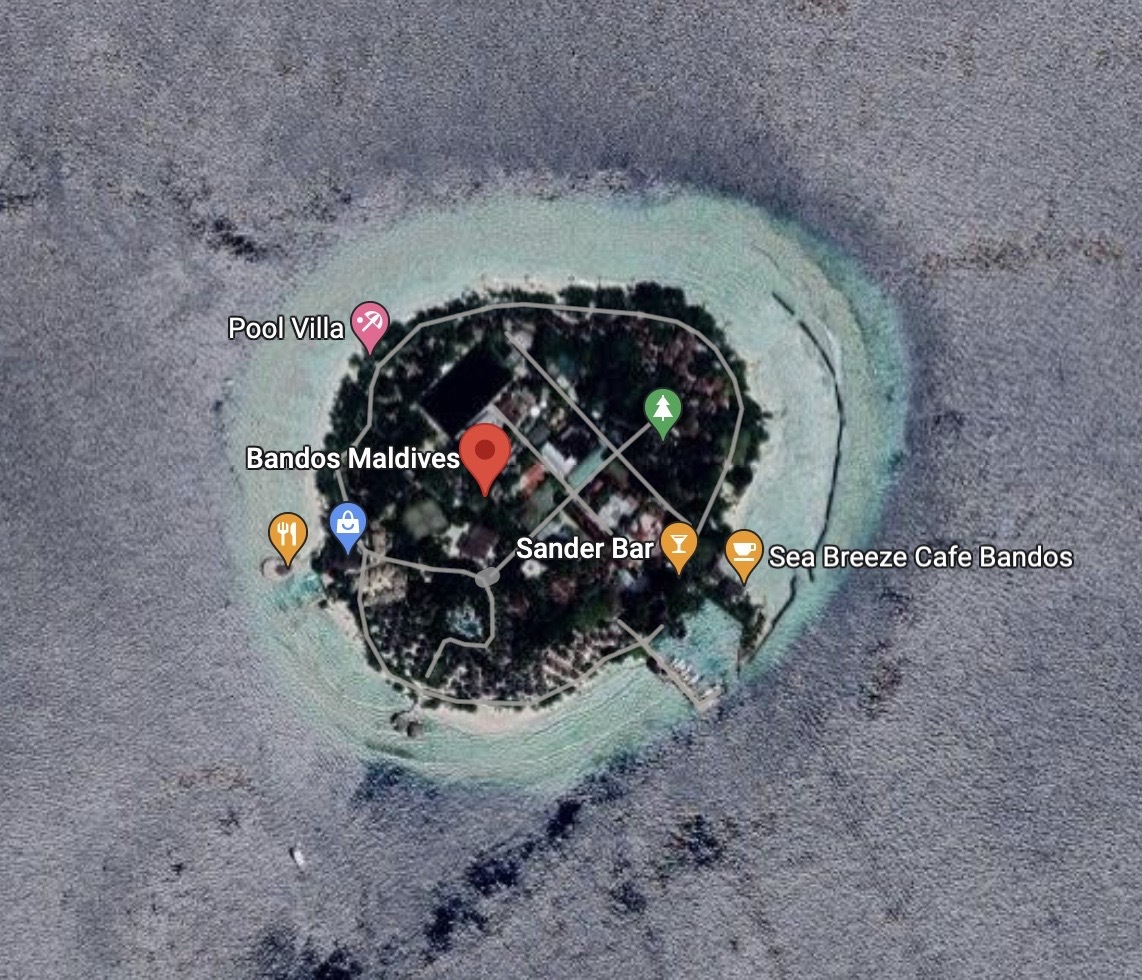
Bandos (Photo Courtesy, Google Maps)
A ban on single use plastic was enacted in June of last year. By doing this, the Republic of the Maldives aims to eliminate the majority of its plastic waste by 2023.
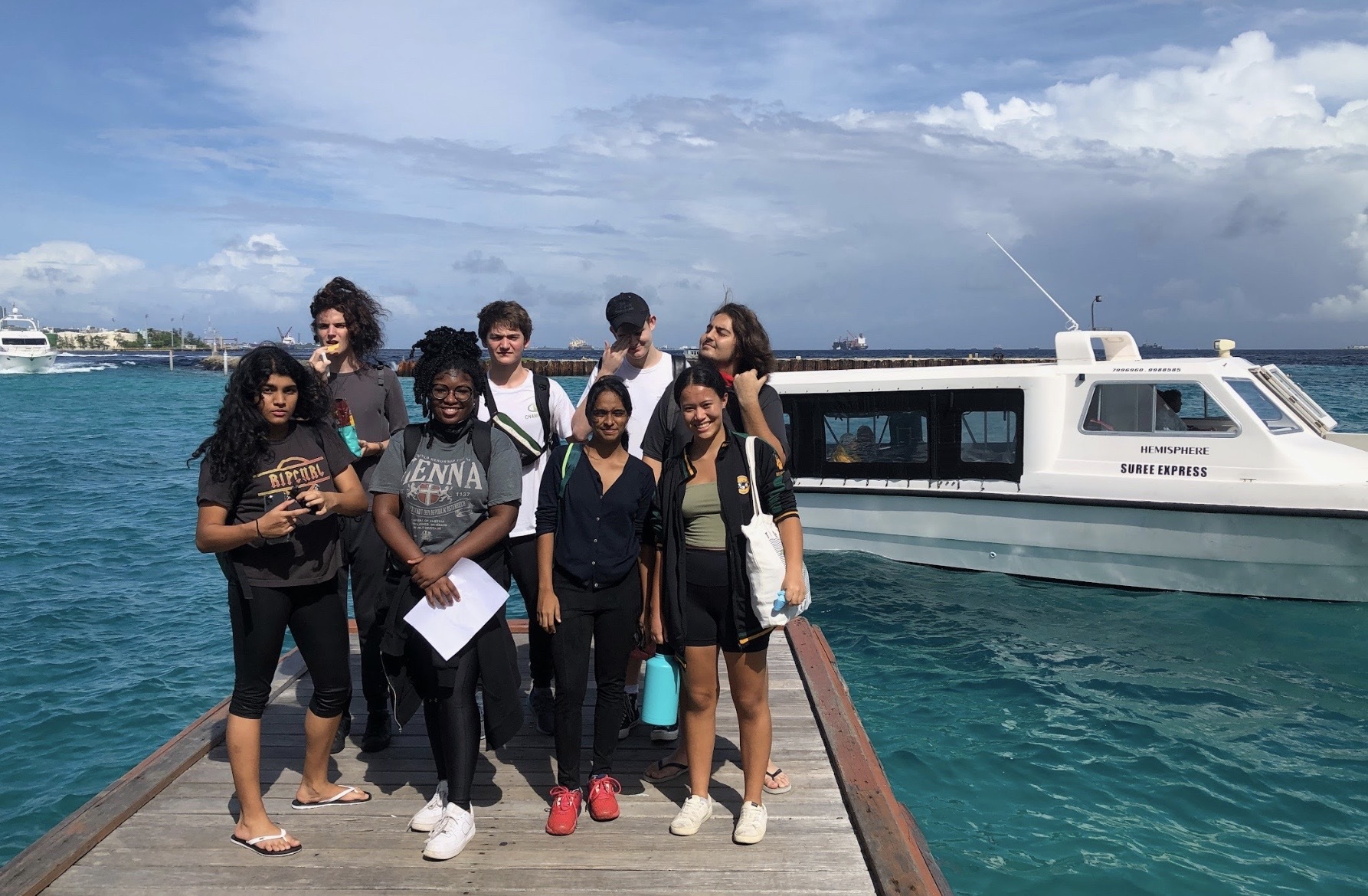
Us arriving in Malafushi (Photo Courtesy, Mr. Lockwood)
On our first day, on the island of Maafushi we had our first snorkeling session in a less crowded part of the beach. We looked at the various different types of sea life including the vast coral-systems off the coast of the island. Much of the coral was in the process of being rehabilitated due to damage caused by things such as pollution and the effects of climate change. Coral restoration directly improves both the health of the overall reef and the biodiversity. Metal frames are set in place underwater and coral is reattached and allowed to regrow.
Later in the day, our group met with the Island Council Chief, Hasan Solah. He explained to us that because the Maldives were categorized as being a “Climate Emergency” they had to tread lightly when it came to waste management. With nearly half of Maafushi’s population being prisoners there’s a lot of waste being generated. In 2018, the Maafushi waste management program processed an average of 1733 kg of waste every single day through their landfill. The waste within the landfill gets burned in segments in order to deal with the high quantities of it. Along with this, Hasan also showed us the generators that produce the majority if not all of the island’s energy. All of the fuel on Maafushi is imported and the generator operates at a max load of 2.7 megawatts.
The next stop on our trip was the island of Embudu, more of a resort island and their approach to energy was slightly different. Their generators were combined with solar panels on top of all the buildings for heat and all the waste was incinerated rather than left to burn in huge heaps like in Maafushi. Despite this, much waste was still transported to “dump islands” like Thilafushi.
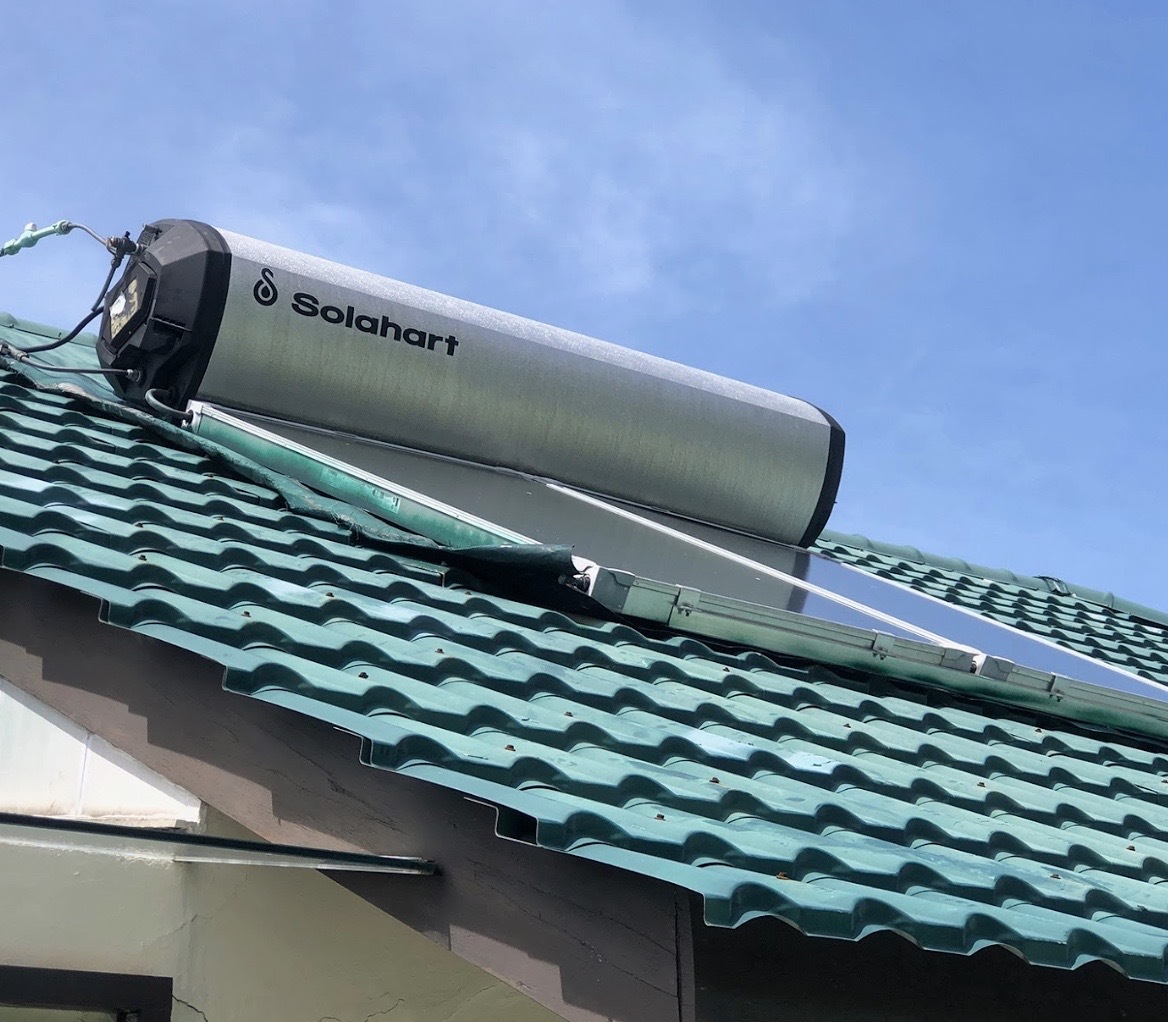
Solar Heating in Embudu Village (Photo Credit, Mr. Lockwood)
In an attempt to completely get rid of single-use plastic bottles, the Island had a bottling facility on site in which water was filtered through and bottled in reusable glass bottles.
Earlier in the day we went on another snorkeling excursion off the coast of this island and we saw lots of different fish. My highlights were seeing several Teardrop Butterflyfish and seeing a huge Moray Eel. There’s so special about seeing such beautiful fish so close as opposed to seeing them in an aquarium.
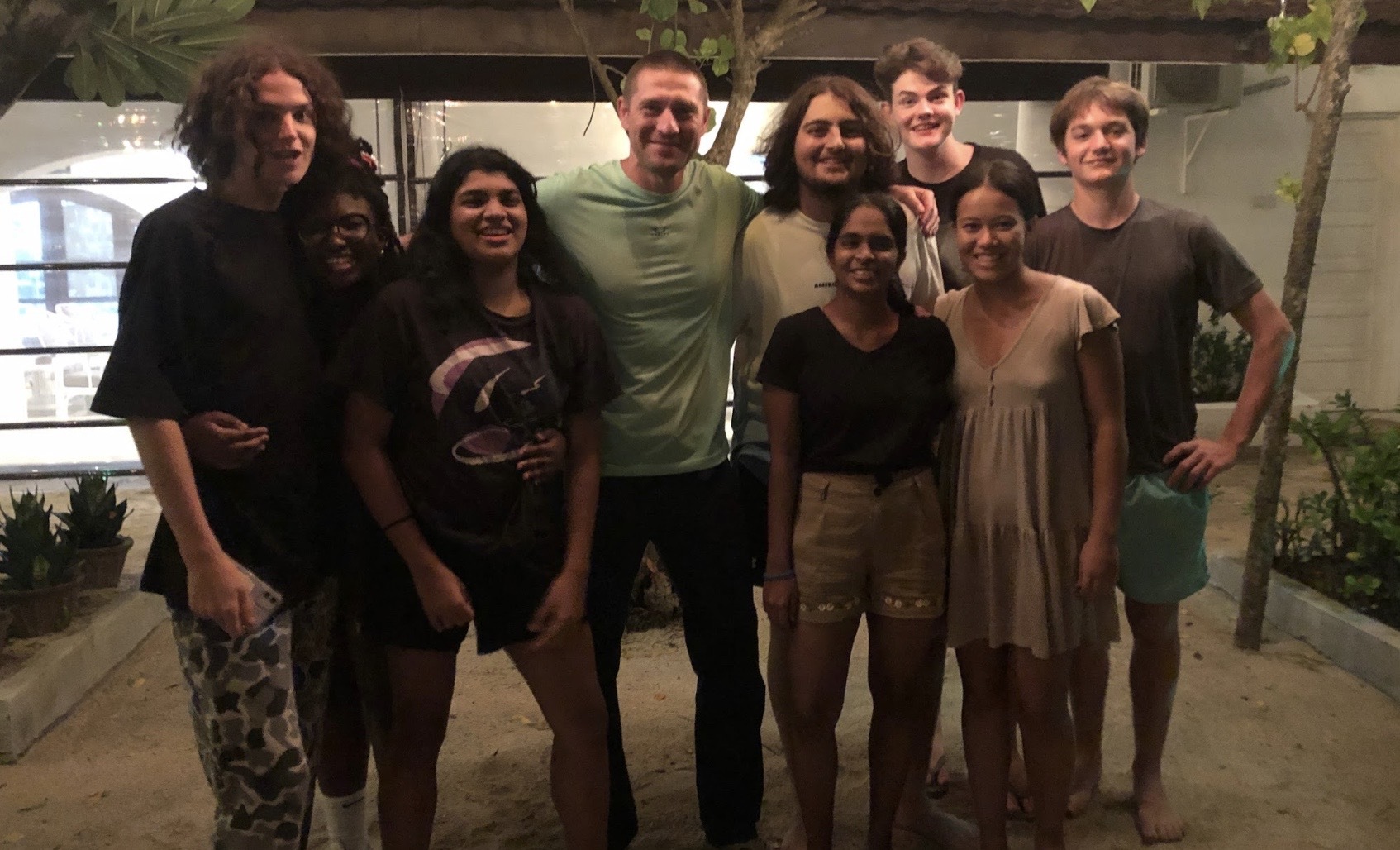
The Group at Embudu (Photo Courtesy, Mr. Lockwood)
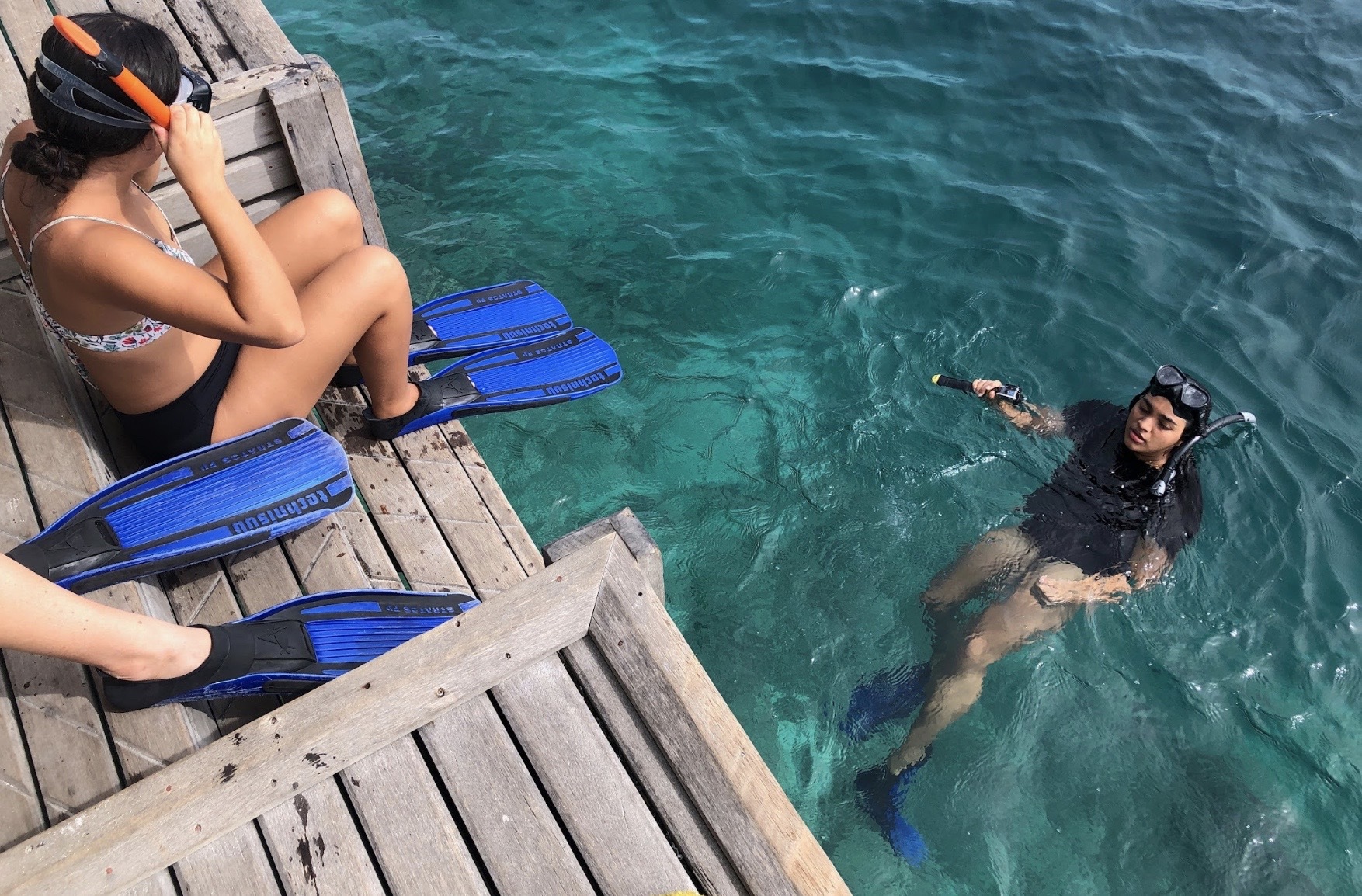
Embudu Snorkeling (Photo Courtesy, Mr. Lockwood)

All of us under the water (Photo Courtesy, Mr. Lockwood)
The last day of our trip was probably the most eventful. The day started with a boat ride from the main city of Male (where we had spent the night) to the island of Villingili where we met local ocean awareness activist Bebe from the environmental conservation organization, Save The Beach. Villingili is one of the foremost examples of the nation’s environmental protection efforts with all vehicles on the island being electric. Despite this though, Bebe explained to us that during the construction of the island’s port, the coral decreased down to only 7% of what it was before. He explained to us that the environmental evaluations needed were done rather quickly and that not all aspects were taken into consideration. Because of this, his organization focused on coral restoration projects surrounding the island and educating the locals on these issues. Bebe explained to us that education programs played a vital role in reducing the island’s waste.
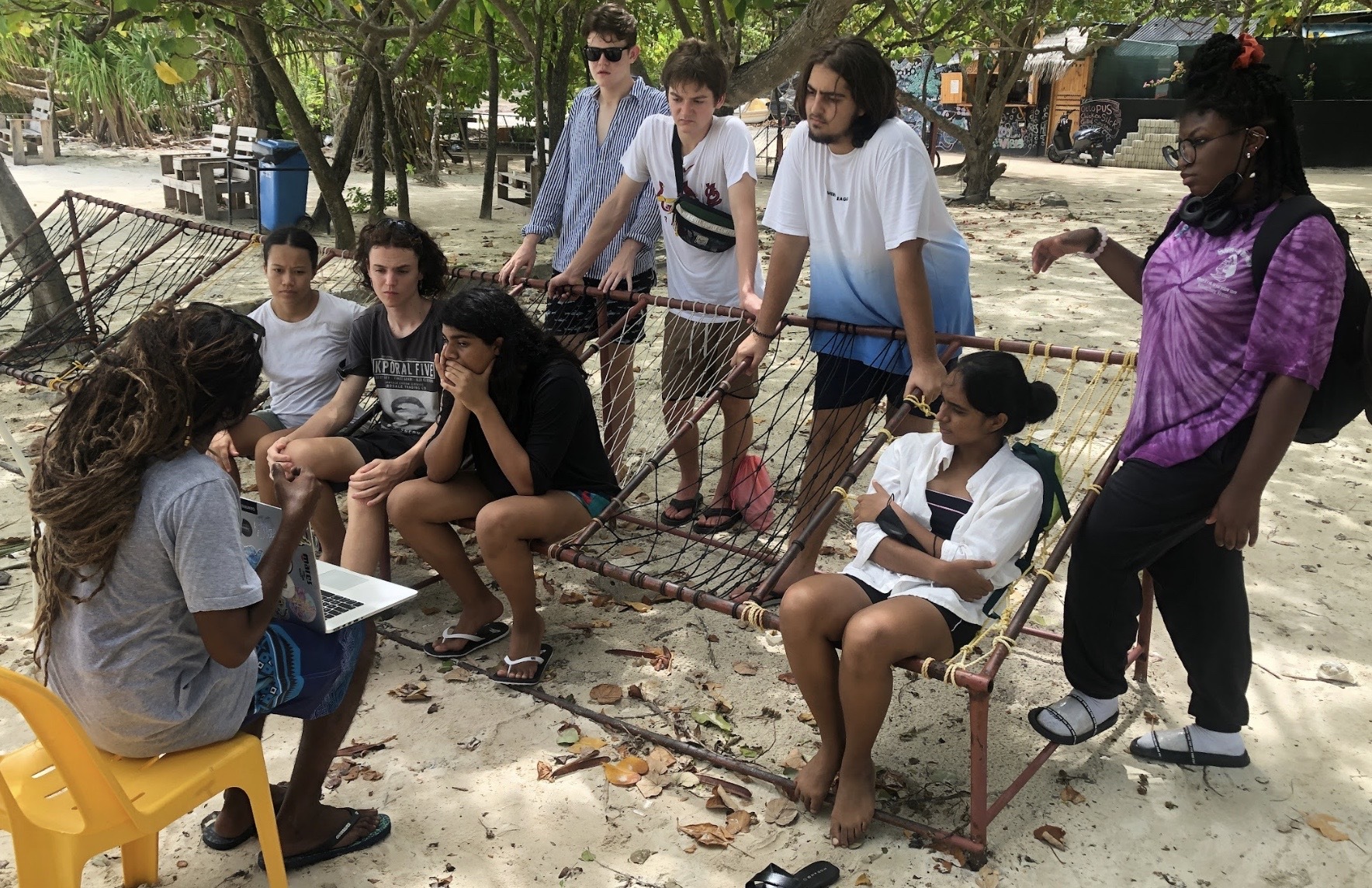
Listening to Bebe speak about conservation efforts (Photo Courtesy, Mr. Lockwood)
The snorkeling off of Villingili was probably the best out of the trip. We saw huge sea urchins and even clownfish when we got closer to the reefs among the coral restoration frames.
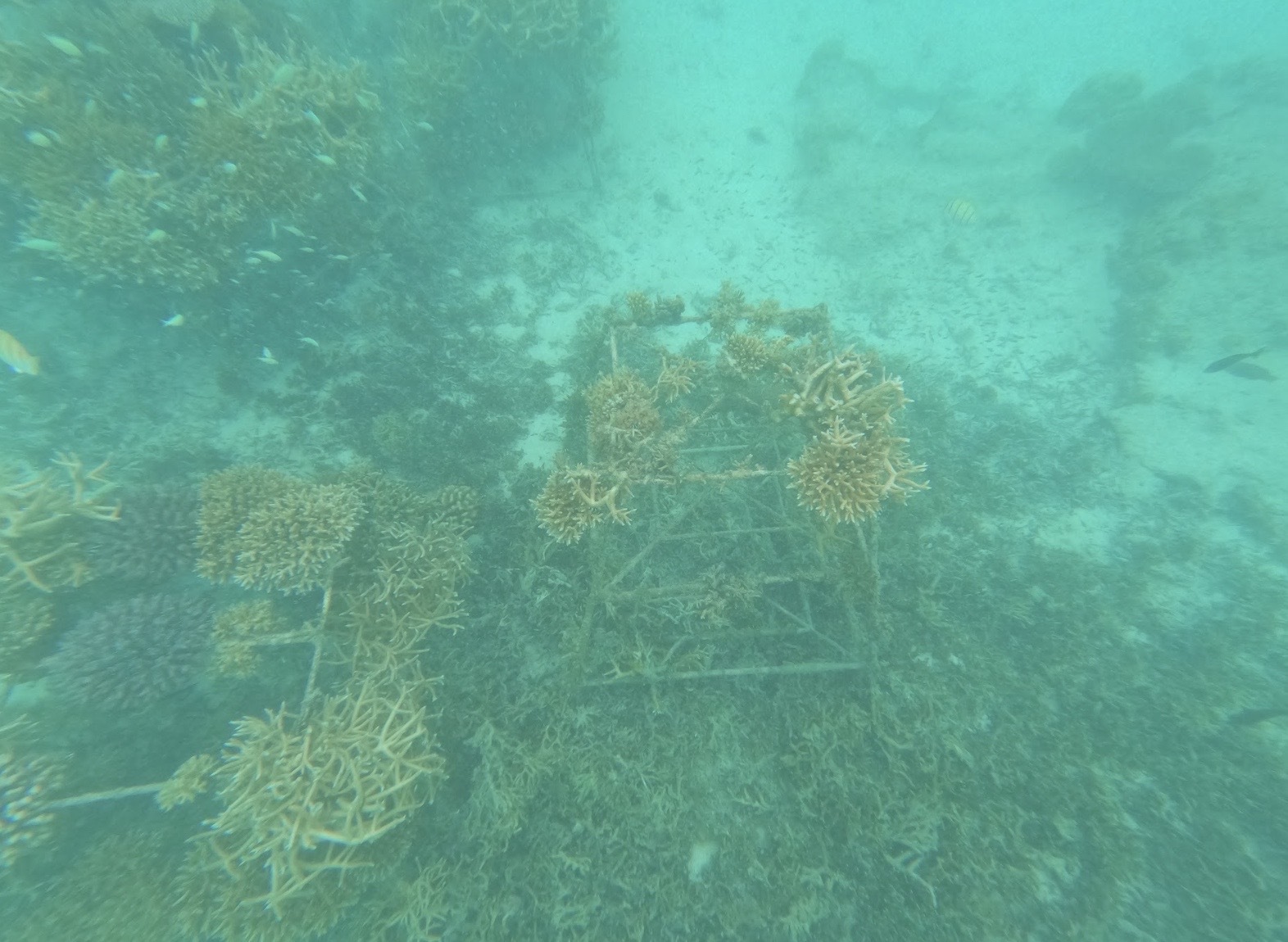
Coral Restoration Frames in Villingili (Photo Courtesy, Eleez Omar)
The second last island we visited was Thilafushi, the aforementioned landfill island. Thilafushi used to just act as a landfill where boats would bring in trash to be burned from the many resort islands and the city of Male. Now however, metallic waste is separated from the trash via an electromagnet on a conveyor belt and the rest of the waste is compacted into bales and stacked up. This way, there’s less emissions as there’s no burning taking place.

The Highlight of the trip (Photo Credit, Mr. Lockwood)
We capped off the trip by visiting Bandos, a resort island owned by Nik’s grandfather. We played volleyball and saw some Reef Sharks and Manta Rays by the jetty before taking a boat back to the airport and flying home.